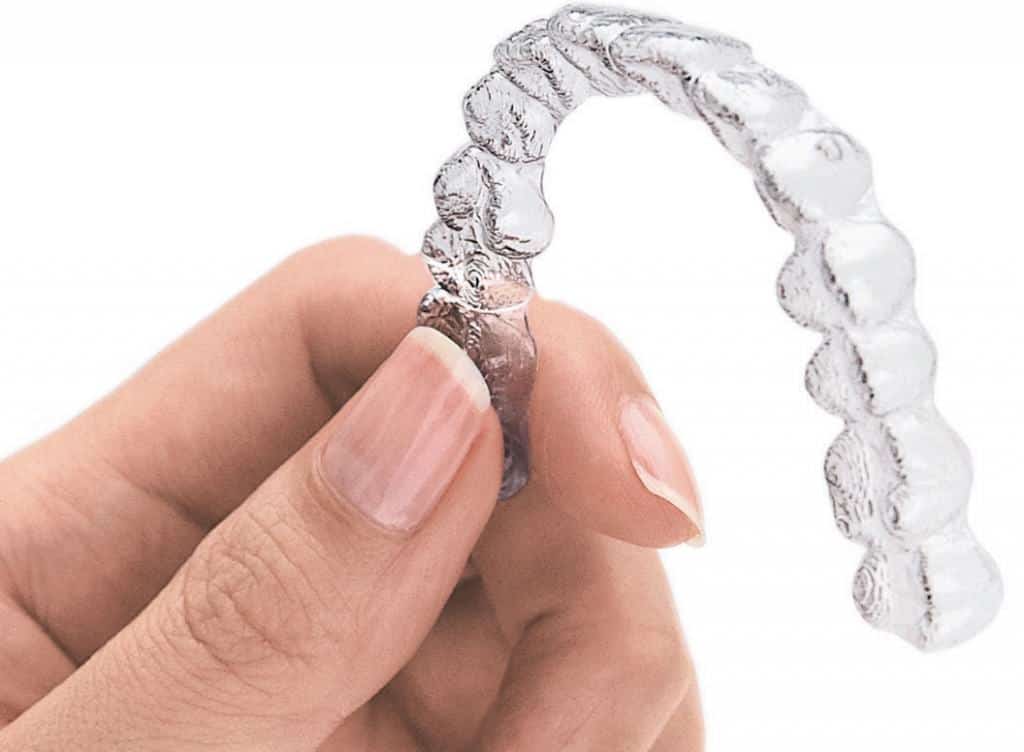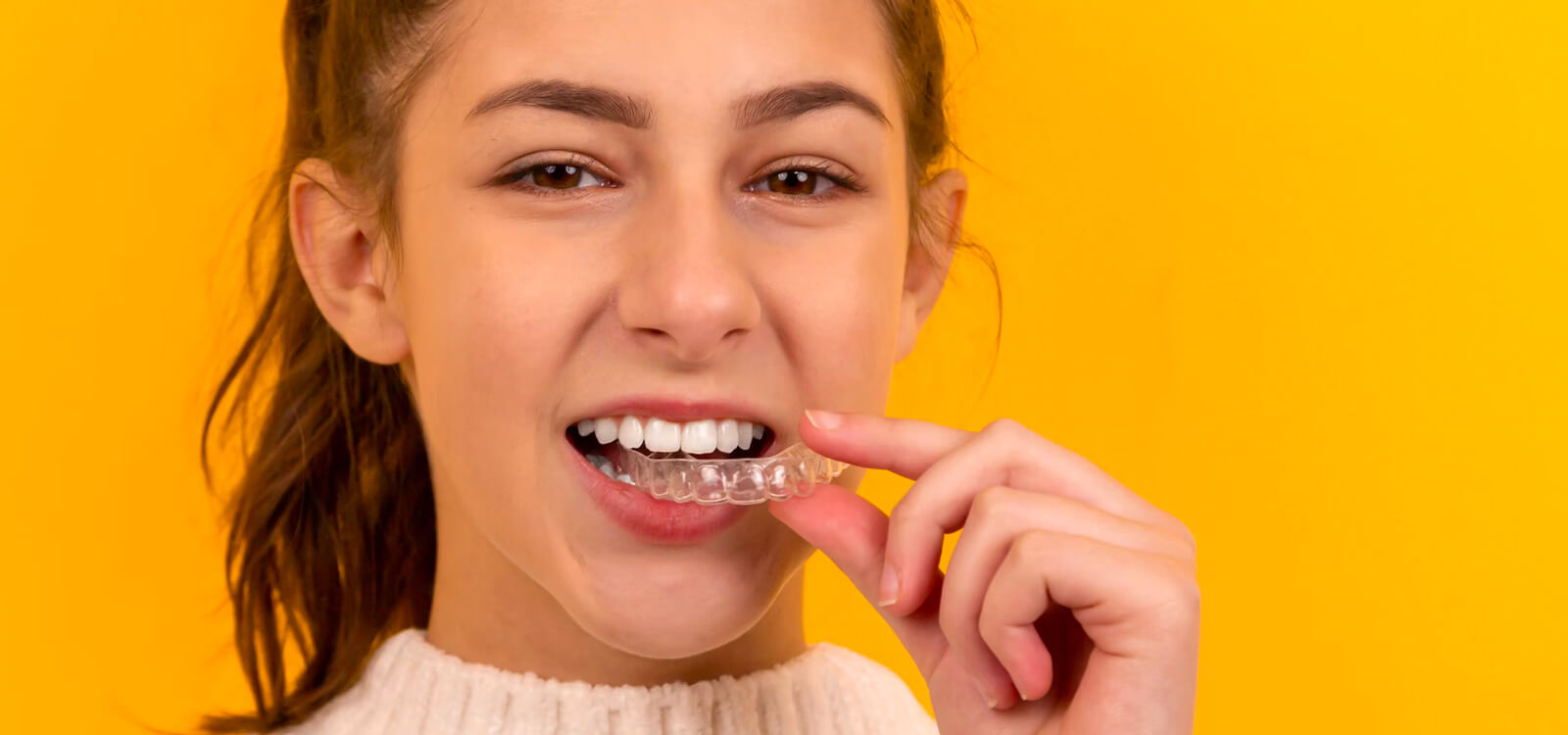Archaeology has given us a look into ancient orthodontic practices, unearthing mummified remains with teeth encased in metal bands, and writings by Hippocrates and Aristotle dating back to between 400 to 500 B.C. contain thoughts on how to straighten teeth and fix other dental problems. In the 1700’s writings are devoted to appliances and methods of aligning teeth. In the 1900’s, many different metals were used for bands and other portions of braces, such as wires. It wasn’t until the 1970’s however that brackets came into use, replacing bands. Although brackets had been invented sometime earlier, the adhesive took more time to perfect.
People Also Ask
- Are lingual braces better than Invisalign?
- Which is cheaper braces or Invisalign?
- Are lingual braces more expensive than Invisalign?
- Do lingual braces hurt more?
Braces Vs Lingual Brackets
The appearance of lingual braces, brackets affixed to the inside of the tooth surface, rendering them “invisible,” happened around 1975 in Japan to protect the lips and cheeks of martial arts students. Orthodontists in America were also working on the same concept, but for different reasons, aka Showbiz. Lingual braces were slow to catch on because specialized training was needed to treat a patient with these invisible braces.
Invisible liners are a fairly recent offering in the world of orthodontics. Using clear aligners to move teeth was created by a Stanford grad student who noticed his plastic retainer would move his teeth back into alignment should he forget to wear it for a few days. It is the go-to treatment system for youth and those seeking straight teeth without a mouth of metal and those needing to eat a continuous diet unaffected by the restraints of brackets.
Lingual Braces
-
The Treatment
Treatment with lingual braces is preferable to a very small amount of patients. Largely, who are self-conscious about wearing braces. Teenagers are uncomfortable with the traditional “metal mouth,” standing out for the wrong reasons and being teased because of unsightly metal braces. Adults worry about how metal braces that, in their mind, are for kids will look, and how they will be judged by others.
Millions of people in the U.S. have braces, with fully one-fourth of those patients being adults. This is just one more reason invisible braces are in high demand. Lingual braces attach to the back of the teeth and use the same wires and brackets and move the teeth in the same way as traditional braces.
-
Difficulties
Placement of lingual braces creates a host of challenges to overcome, more so than traditional braces. Since the brackets are on the tongue side of the teeth they interfere with speech somewhat since the tongue plays a large part in speech. Some sounds require the tongue to make contact with the teeth in places there are now brackets. Meaning the tongue must find another place to rest. Most patients report their speech returns to normal within a month.
One of many drawbacks is that brackets on the back of the teeth are harder to get used to than the traditional ones on the front. And working with them takes longer so a longer appointment is needed. Some argue that patients with a severe overbite can dislodge some upper brackets as they chew, but results seem to indicate that this is not a problem. Some practitioners question the results as opposed to the traditional positioning. This is what makes Invisalign the more usable treatment method.
As with anything, practice helps so patients are advised to read out or think out loud. Also, the tongue can become sore until it gets used to the brackets. This can be alleviated by saltwater rinses, orthodontic wax, or products designed for teething pain. Cleaning lingual braces is more difficult also. But the use of an electric toothbrush and special floss can help.
In terms of eating, the lingual falls well short of aligners. You must restrict your diet quite considerably. Hard crunchy foods are a NO-NO! You should consult your orthodontist about this in detail as broken or damaged brackets are expensive and cause delays.
What is Better Lingual or Invisalign?
Alas, ‘better’ is in the eye of the beholder. Invisalign is more popular, you’ll find more practitioners are expert on the aligner treatment. Lingual experts are hard to find, and as above, the appointments take longer too. So, with respect to differences, Invisalign is easier and therefore better.
Invisalign
-
Is Invisalign better than braces?
This method is not physically better than traditional braces as far as moving the teeth and correcting dental issues. The main benefit of this method is aesthetic. The clear aligners straighten teeth with a series of aligners that gradually move teeth, so they are virtually invisible and can be removed to eat and brush, but they do need to be worn for a minimum of 22 hours per day. Patients wear a liner for two weeks before moving to another set.
-
Is Invisalign better than metal braces?
For severe cases, simple plastic liners do not offer the necessary components that traditional braces do for shifting the jawline and rotating teeth through the use of more wires and bands to exert forces where needed to move teeth into place. It is just one more tool used to create a beautiful smile.
While Invisalign can be administered by a dentist who lacks the specialized training of an orthodontist, it is still recommended to use a specialist even for this because the path of treatment must still be mapped out. The entire course from beginning to end and how to get from point A to point B needs to be known before the first bracket is attached or the first tray is snapped in, which should be done by an orthodontist.
-
How do I get Invisalign braces?
As with traditional braces, x-rays and dental impressions must be made before the liners are made so that they fit correctly. The company, Align Technologies, then creates a treatment plan and sends a video for the patient to approve. Once approved, the treatment can begin. The first set of aligners will be set in place by your doctor.
You will receive, depending on your doctor, anywhere from one to multiple future aligners to change every two weeks. The average treatment time is 10 to 14 months, although every person is different and some patients will need a longer course of treatment.
Schedule an Appointment Today
Higginbotham & Nease Orthodontics has multiple facilities in South Carolina that are located in these cities:
- Gaffney
- Duncan
- Spartanburg
Patients love visiting these two orthodontists at Higginbotham & Nease Orthodontics:
Not only is there top-of-the-line diagnostic equipment to determine if you or your children need to wear braces or aligners, but also, a facility’s employees strive to make the visits fun. Patients may need to wear old-fashioned metal wires and brackets or modern Invisalign aligners to improve their bite or smile to avoid having a frown. Call us today at 864-579-7700 to schedule an appointment.



